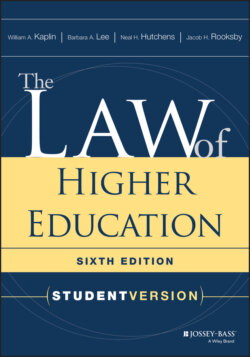Читать книгу The Law of Higher Education - William A. Kaplin - Страница 24
C. Sources of Higher Education Law
ОглавлениеAs a keystone of their internal governance systems, higher educational institutions create “internal law” that delineates authority and rights, and embodies the rules and procedures, by which institutions govern themselves. There are three main sources of internal law: institutional rules and regulations (Section 1.4.3.1 of this book), institutional contracts (Section 1.4.3.2), and academic custom and usage (Section 1.4.3.3). Circumscribing this internal law is the external law (here, public external law) created by the federal government and state and local governments through their own governance processes (Section 1.4.2). These sources of law, and the interrelations among them, are another factor to consider—along with the education law universe sectors (Section A above) and the governance structures and processes (Section B above)—when reading judicial opinions or analyzing problems in higher education law. It will be helpful, therefore, to identify the pertinent source(s) of law that provide(s) the basis for the judicial opinion or that can be used to analyze the problem. Figure I.2 depicts the various sources of law and the order in which each source “trumps” other sources. Each ring of law in the figure is superior to the other rings that are farther inside and inferior to the other rings of law that are farther outside. Thus, when there is inconsistency or conflict between two applicable sources of law, the law in the ring farthest from the center will prevail.
Figure I.2 The External Law Circumscribing the Internal Law
